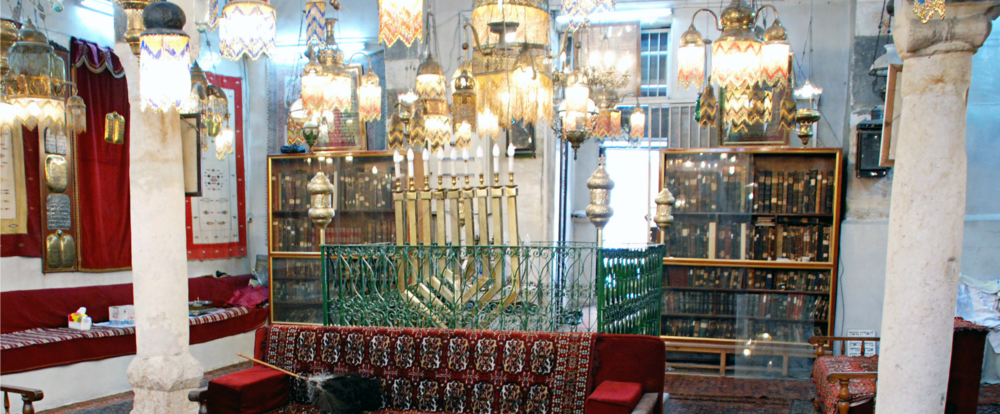No culture ever vanishes completely… vestiges can be found if one looks hard enough. Recently, however, the Islamic State and a plethora of other terrorist organizations in the Middle East have been on a rampage of destroying culture they deem unfit for or contrary to their mission. I was in the hospital last year when ISIS dynamited the ancient temple complex at Palmyra. Needless so say, it did not help to expedite my recovery.
A culture vastly overlooked by many historians and academics alike is the rich Jewish culture that used to flourish throughout cities in the Middle East, North Africa, and the Balkans. Only seventy years ago, there were still thriving Jewish communities in cities across the Muslim world. Some were very shaken, like in Baghdad, some on the precipice of collapse, like Damascus, and some would soon be completely abandoned, like in Alexandria. Instead of abandonment, there’s a new problem facing Jewish heritage sites in the Middle East: the merciless destruction of Jewish culture by terrorist organizations.
An organization that wishes to combat this merciless destruction of culture is the Diarna Geo-Museum, co-founded by Jason Guberman-Pfeffer. Diarna staffs a “situation room” in cooperation with the American Sephardi Federation at the Center for Jewish History. Put simply by Jason, the Diarna team is working to win the “race against time,” trying to ensure that priceless examples of Sephardi Jewish culture aren’t erased permanently from the face of the earth.

I was introduced to pictures of the beautiful Jobar Synagogue in Damascus, also known as the shrine of the Prophet Elijah (Eliahu HaNavi). I sat down and looked at a shrine that has existed for thousands of years. Beautifully preserved and meticulously up-kept, the shrine was in perfect condition until 2012. Syrian rebels, if I remember correctly, wanted to use the site as a territorial extension of their rule over Damascus. The sanctuary was devastated when caught in the cross fire between Assad regime forces and the rebels. It has since been completely razed to the ground, and in the words of Jason Guberman and Diarna researcher Ezra Ashkenazie, it was turned into a “field.” As for the objects inside, there are some rumors that they were removed for safe keeping, and I would love to believe that to be true. But my imagination can’t help seeing things differently.
The goal of Diarna is not to have you leave smiling about the future of Sephardic culture, nor remorseful about the loss of amazing art and architecture. It’s to prevent, by way of digital preservation, the future erasure of Jewish heritage in a world swarming with turmoil. I left secure in the fact that there are still beautiful examples of heritage in places like Egypt, Iran, Morocco, and Yemen. But I also felt determined to join this “race against time” to make sure that my children can know about their existence as well.
Cultural salvage, or the act of trying to preserve culture from change or destruction, is always a tricky topic, and can sometimes lead to very difficult, emotional, and even heated situations. But I am proud to say that I believe the Diarna Situation Room to be on the moral side of cultural salvage. Its good intentions have led to deep and organized research, and I am happy to have spent the afternoon witnessing some of it.

